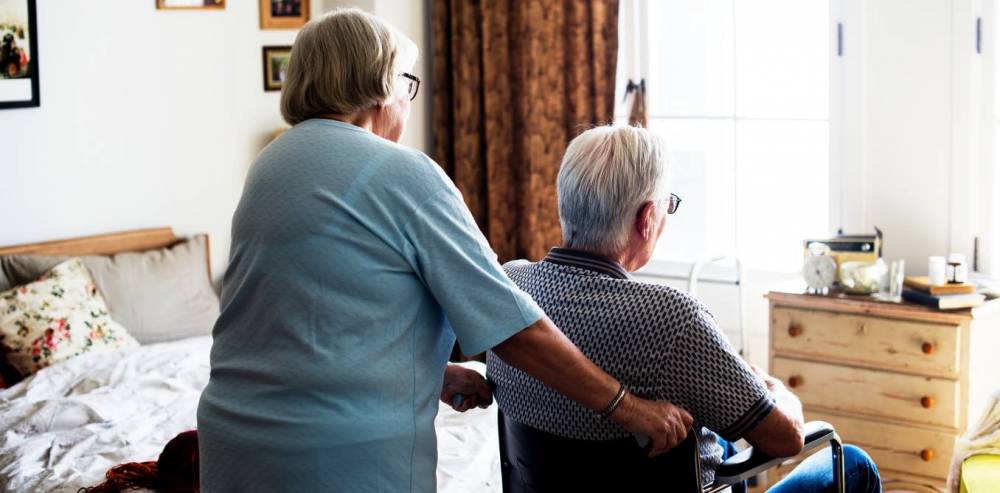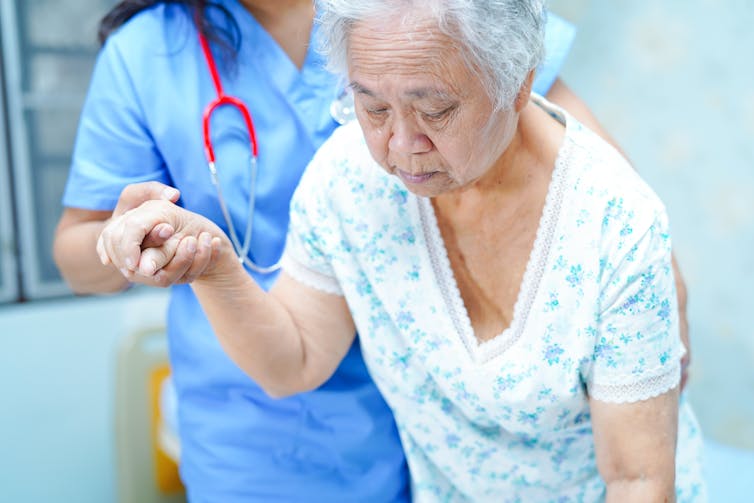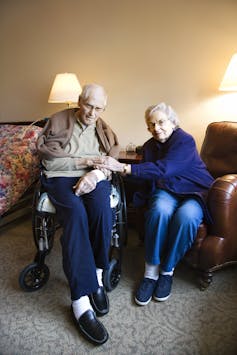
By Laura Davy, UNSW
This week at the aged care royal commission hearings, the CEOs of three aged care providers called for a change in the way residential aged care is funded to improve the quality of care.
This followed a plea from Aged Care Services Australia for the government and opposition to address what it called a “crisis in residential aged care funding”.
But while most residential aged care funding comes from government, residents also have to contribute. So how does this complicated payment system work?
In July 2014, the government introduced several changes to the residential aged care accommodation and care fees rules. These were part of wider reforms to the aged care system initiated under the Aged Care (Living Longer Living Better) Act 2013.
One of the biggest changes was the introduction of means testing. Many residents of aged care facilities are now expected to pay a portion of their care and accommodation costs themselves, but whether and how much they contribute is determined by an assessment of their personal financial circumstances.
A person who receives a full age pension and has just a small amount saved in a bank account, for example, will likely have their accommodation and care costs fully subsidised by the government – aside from a daily care fee, which is a proportion of the pension.
Someone who receives a higher income and owns significant shares and investments may need to pay some or all of their accommodation and care costs.
There are four main costs associated with residential aged care:
1) Daily care fee
This fee covers living costs such as meals, cleaning, heating and power. All residents of an aged care facility pay this fee, which is fixed at 85% of the age pension.
2) Daily means tested care fee
Some residents also need to pay an additional contribution towards the cost of their care. The Department of Human Services conducts an income and assets assessment to work out whether people need to pay this fee, and if so, how much it is.

All residents pay a base fee for care, but depending on your ability to pay, you may have to contribute more.
Sasirin Pamai/Shutterstock
3) Accommodation costs
This includes the cost of the room and other physical amenities provided by the aged care facility. Some residents have their accommodation paid for fully or partly by the government, while others need to pay accommodation costs privately.
4) Additional services fees
Some facilities offer extra services such as newspaper delivery, hairdressing and cable TV. Fees for these additional services only apply if the resident agrees to pay them.
Out of these costs, accommodation costs are often the highest as well as the most confusing.
Those who need to pay all or some of their accommodation costs have a couple of different payment methods to choose from:
Refundable accommodation deposit (RAD) or refundable accommodation contribution (RAC)
RADs and RACs are lump sum payments for a resident’s accommodation. They work like an interest free loan paid to the aged care provider, who is then able to invest this amount, for example in improvements to the facility and services, and earn interest on it.
The lump sum amount is refunded to the resident or their estate if they move or pass away, and is guaranteed by the government even if the provider goes bankrupt.
Daily accommodation payment (DAP) or daily accommodation contribution (DAC)
DAPs and DACs work like a rental payment. Residents pay the aged care provider the daily rate of lost interest on what the lump sum amount would be for their room. The interest rate is set by the government and is currently 5.96%.
You can also pay through any combination of these methods, such as 60% RAD and 40% DAP. For example:
Linda agrees on a RAD price of A$320,000 for her room, and wants to pay this amount in a lump sum. When she leaves the facility, the RAD amount will be refunded to her or her estate.
Gary also chooses aged care accommodation with a RAD price of A$320,000, but he wants to pay the daily amount rather than make the full payment upfront. Gary’s DAP is calculated from the RAD amount for his accommodation, and comes to about A$52 per day.
Maria wants to pay some of her accommodation costs as a lump sum RAD and the rest via a DAP. If her accommodation is also priced at A$320,000 and she pays A$192,000 as a part RAD, her DAP for the remaining amount is about A$21 per day.
The answer depends on where you stand on broader issues around fiscal responsibility and intergenerational equity.
Governments have argued the reforms implemented since 2013 are necessary to sustain the aged care system into the future, particularly given a rapidly ageing population and growing budget deficit.
In terms of the payment options themselves, there are some significant advantages to paying an accommodation lump sum if you are in a financial position to do so. It can help preserve your estate and age pension eligibility, as the RAD or RAC amount is refunded and is exempt from the pension income and asset tests.

The DAP and DAC payments are not refundable.
But given that the average value of RADs and RACs held by providers in 2017 was A$283,499, a rental-style payment may be the only option for many people.
There are annual and lifetime caps to the means-tested care fee, but not for accommodation payments, so this daily cost will stack up over time.
Keep in mind, however, that the average length of stay in permanent residential aged care was just under three years in 2017, and many people pass away or leave the facility after a stay of just three, six or 12 months.
Some recent reforms aim to make the system easier to navigate and more transparent, such as the introduction of the My Aged Care gateway and the requirement for aged care providers to make their accommodation pricing public.
But the system is still highly complex, and the onus is on government and care providers to provide accessible information.
A consumer-led system will only work if consumers are informed. This requires investment in education and awareness campaigns to promote greater knowledge of aged care policy, fee structures and options, as well as affordable sources of financial and legal advice.
Laura Davy, Research Fellow, Public Service Research Group, UNSW
This article is republished from The Conversation under a Creative Commons license. Read the original article.
I am sorry but My Aged Care is not easy to navigate , it is very confusing hopefully overtime t will become easier.I